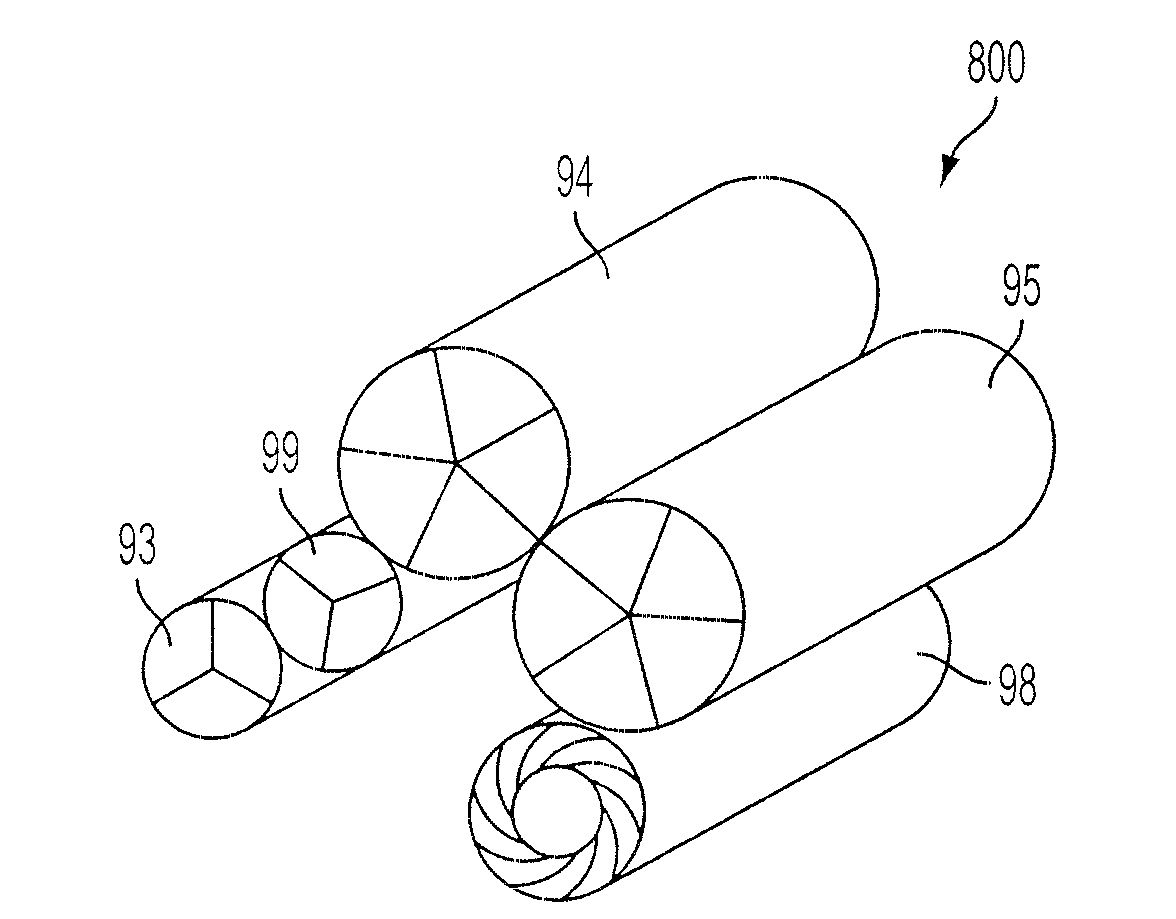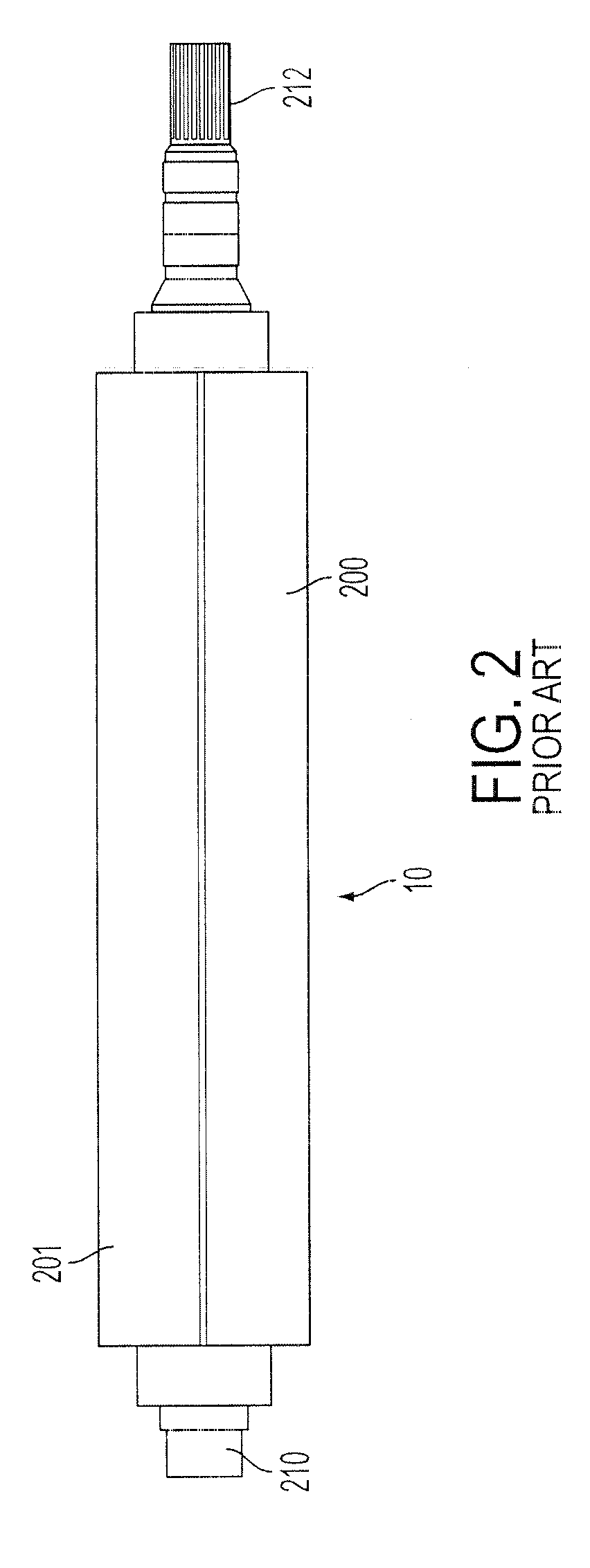Printing Press, Folder, and Methods of Operation
a printing press and folder technology, applied in the field of rotary presses, can solve the problems of reducing the cut-off length, affecting the operation speed affecting the quality of the printing press, so as to reduce the cut-off length
- Summary
- Abstract
- Description
- Claims
- Application Information
AI Technical Summary
Benefits of technology
Problems solved by technology
Method used
Image
Examples
Embodiment Construction
)
[0086]Generally disclosed herein are systems and methods for reducing the cut-off length of a newspaper, wherein a plate cylinder that generates images for two sheets is replaced with a plate cylinder of the same diameter and length that generates images for three or more sheets, and the press unit is operated with the latter cylinder. There is also described a folder designed to work with such a press, and methods for utilizing such a pressline in a three-around print mode. Generally, the press units and folders discussed herein will be generated by retrofitting an existing press unit or folder to carry out printing in a three-around mode, while maintaining the same footprint as the original press unit.
[0087]To refer to differently sized printings this disclosure will refer to printing in a two-around mode, a three-around mode, etc. This is to indicate that during each rotation of a plate cylinder a press unit (101) is printing either two or three pages with a page being defined a...
PUM
| Property | Measurement | Unit |
|---|---|---|
| cut-off length | aaaaa | aaaaa |
| length | aaaaa | aaaaa |
| diameter | aaaaa | aaaaa |
Abstract
Description
Claims
Application Information
 Login to View More
Login to View More - R&D
- Intellectual Property
- Life Sciences
- Materials
- Tech Scout
- Unparalleled Data Quality
- Higher Quality Content
- 60% Fewer Hallucinations
Browse by: Latest US Patents, China's latest patents, Technical Efficacy Thesaurus, Application Domain, Technology Topic, Popular Technical Reports.
© 2025 PatSnap. All rights reserved.Legal|Privacy policy|Modern Slavery Act Transparency Statement|Sitemap|About US| Contact US: help@patsnap.com



